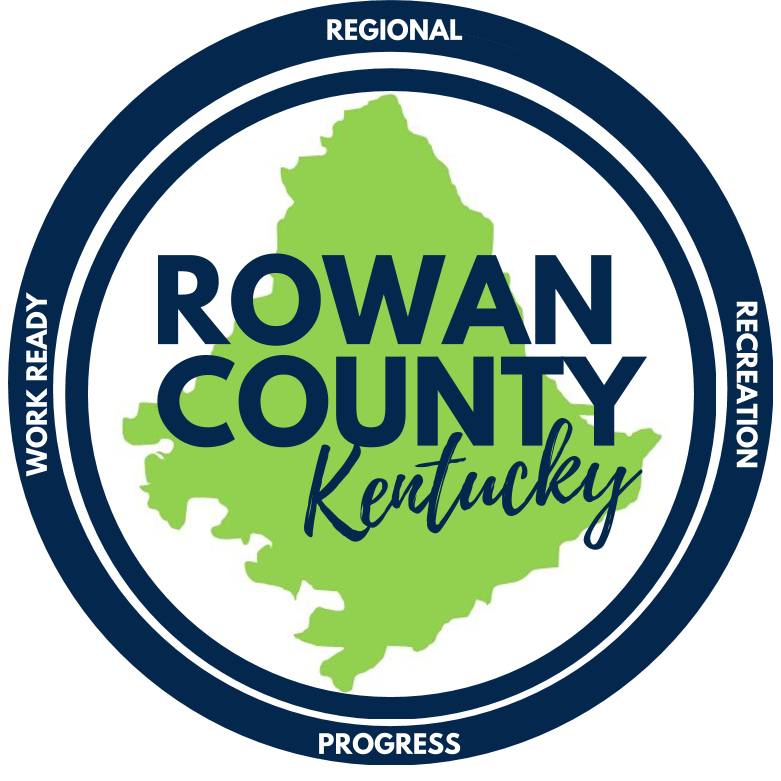Rodburn
The Rodburn area was a thriving community in the early days of Rowan County. On April 14, 1797, George Johnson obtained a patent from the commonwealth for 3,000 acres of land. On February 8, 1810, Johnson conveyed 300 acres to Robert Nickel, who lived on the land until his death in March, 1852, and the land was divided into plots for his children. Three of the children sold their land to Moses Hawkins, husband of Melvina Hawkins and sister to the siblings who sold their land. Melvina and Moses settled on the land and lived there until October 20, 1863, when it was sold to H.G. Burns. Robert Nickel lived on 2 of the lots until about the time of the Civil War and on August 20,1861, he conveyed the property to H.G. Burns. Burns married the daughter of Elkana Johnson and they all lived there until 1885 when the whole family moved to Virginia. On December 29, 1887, Burns and his wife conveyed the land to the Hixon Lumber Company.
The New York based Hixon –Rodburn Lumber Company established a large sawmill centered at the junction of US 60 and KY 32 at the northeast section of Morehead. The mill town was established in 1873-74 to process the timber shipped from the vicinity of Cranston. The mill employed 500 men and had a million-dollar sawmill along with a bandsaw upstairs and a circle saw downstairs.
The modern town had a post office, that was established July 3, 1888 with Amos Hixon as Postmaster. It closed in 1922. The town also had a schoolhouse, blacksmith shop, general store and depot for the Triplett and Big Sandy Railroad and later the Kentucky Northern Railroad. The Triplett and Big Sandy Railroad ran up Christy Creek Road five miles to Vale from 1890 to 1894 and served the Rodburn Lumber Company. It only had one geared locomotive. The Kentucky Northern Railroad was established to haul their timbers from the Cranston – Big Perry area of the county down to the mill at Rodburn. The railroad went out of business before World War I as the timber was depleted. It closed in 1900.
Local men built the railroad and it was all done by hand with a pick and shovel – no horses or plows were used. The railroad also ran passenger trains from Rodburn to New Hope, near Cranston daily. Many residents of Rodburn attended church in New Hope.
The Hixon –Rodburn Lumber Company built homes for their employees that extended down both sides of the road. The houses were modern with board and batten and with buttery and around bored wells. The town had board walks that ran the length of the town. Rodburn also had a four room school, but by 1935, some of the schools in the county were consolidated. Students began attending Morehead Consolidated School.
By 1896, the timber in the area was exhausted and on August 9, 1898 the property went up for sale - 1400 acres of land in seven tracts sold along with all the building used in the lumber company, 48 tenement houses, store house and other buildings, all machinery, 10 miles of railroad and all three railroad cars. The property sold to a New York Company. Shortly afterwards, a fire started at one end of town and ended up burning the entire town down, including the sawmill. The man in charge of the mill was arrested. Only some small businesses and homes were rebuilt. Allegedly the fire killed three men - John Sublett and the two Patton brothers.
The first Civilian Conservation Corps Camp (CCC) was established in Clearfield in 1933. Camp F4 Company 578 was established at the foot of Clack Mountain. The camp was moved to Rodburn in 1935. The government took the farmland belonging to Mrs. Chadima in Rodburn Hollow and set up their camp. The CCC was responsible for the National Forest land in Rowan, Menifee, Morgan, Elliott, and parts of Fleming and Bath Counties. One of their first priorities was fighting fires so they built forty-foot steel fire towers at McCauley Ridge, Hickory Flats, Tater Knob and Triangle. They also strung telephone lines, built the roads over Clack Mountain, Pretty Ridge, Lockege Road, and the CCC Trail from Clearfield to Elliottville. The camp closed with the start of World War II.
On February 22, 1943, a woman was murdered at the Rodburn railroad tracks. The mangled body of Ida Mason was found in the road 4 to 6 feet from the south rail. Ida was born in Elliott County in 1910, the daughter of Stonewall Jackson Mason and Sana Victoria Brickley, the youngest of 12 children. Ida went to work in Cincinnati in July, 1942 but she had expected to give up her job and go home about Easter to live and take care of her mother. Her cousin Matthew Fyffe was tried and convicted of her murder three times but released on appeal each time. The motive was a $15,000 insurance policy.
Rodburn is now noted for the Rodburn Hollow Recreation Area that has campsites, shelters, and hiking trails and is part of the Daniel Boone National Forest.
Article by Cindy Leach
Sources
Bessie Birchfield Papers –Kentucky Department for Libraries and Archives
Robert Rennick -Kentucky Place Names https://scholarworks.moreheadstate.edu/rennick_ms.../
Caseman https://www.casemine.com/judg.../us/5914a6dfadd7b049346e2837
Rowan County News Centennial Edition May 10, 1956
Mrs. Martha Estill -Within this Valley Centennial Edition

